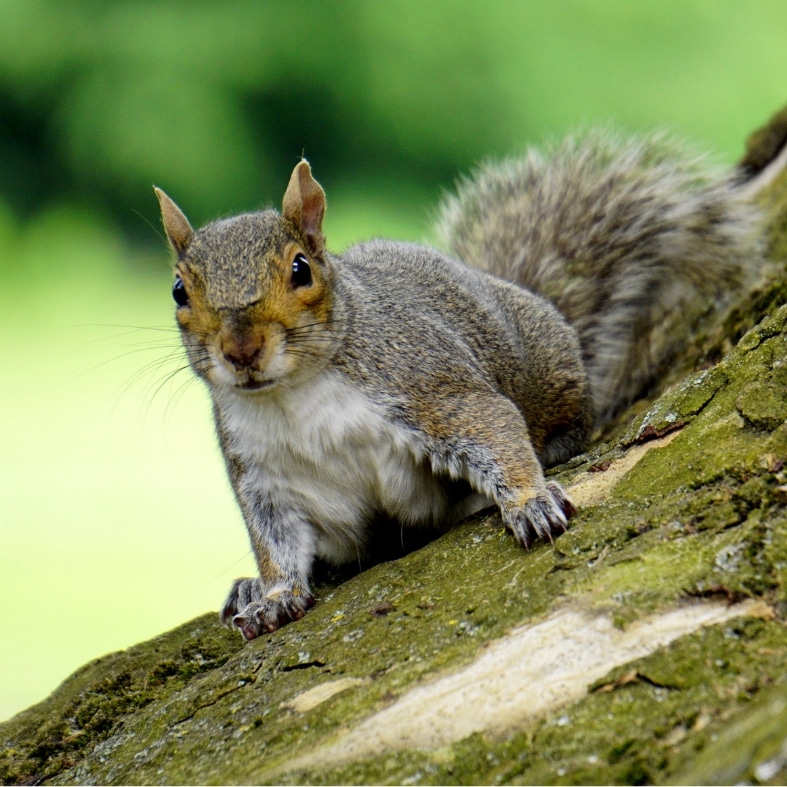
Quick guide on invasive species
Our guide on invasive species will help you check which are edible, non-edible and poisonous or dangerous. Flip the cards to learn more.
Get information on the legal shooting season for mammals and birds in the UK.
Apply for funding for your project or make a donation today
Comprehensive information and advice from our specialist firearms team.
Everything you need to know about shotgun, rifle and airgun ammunition.
Find our up-to-date information, advice and links to government resources.
Everything you need to know on firearms law and licensing.
All the latest news and advice on general licences and how they affect you.


Ian Danby takes us through what you can do to help in the fight against invasive non-native species in the UK.
There are three things you can do to help in the battle against invasive non-native species.
We’ve have at least two thousand non-native species in the UK, but luckily only 10-15% are invasive and cause serious issues. However, there are a set of species we are especially concerned about and which we want to detect and remove before they establish themselves and become an even bigger problem. These are known as alert species.
One you may have seen us cover over recent weeks is the Asian Hornet. This menace typifies the risks because it invades each year. From there, thee battle is on to detect it and move to quickly eradicate, so it does not establish; it just get harder and more expensive to eradicate if we get to this point.
What we must avoid at all costs is new invasive species establishing and becoming widespread, like the grey squirrel or American mink. This is because the task of getting rid of them becomes impossible or prohibitively expensive. So let’s be vigilant, spot the new troublemakers and report them so we can stop them gaining a foothold.
The GB non-native species secretariat, which BASC supports, provides a list of alert species and where, and who to report them to. Some of these species we are likely to spot with trail cams like Racoon dogs (pet escapes typically), pond plants like water primrose or for those among us who fish, marbled crayfish and topmouth gudgeon. Check out the link above and be knowledgeable and vigilant.
A great number of invasive species don’t just arrive in new places by their own means. We transfer them.
Ash dieback has decimated our ash trees and of course it’s spores (it’s a fungus) can travel in the wind, but thousands of imported trees from infected areas abroad is the most likely source.
That’s one reason why we advocate that you should always plant native species of local providence where you can. It’ll be better for wildlife, odds on and will likely grow better as its adapted to your local climate and of course. It will also eliminate the need to buy imported plants and so thus remove the pathway that foreign invaders have used.
However lots of things are transferred between sites in the UK, whether that’s on clothes, vehicles, ourselves or potentially even our dogs. This is where each of us ensuring can ensure basic biosecurity is in place. A good place to start is by cleaning your footwear before and after visiting a site. We have some excellent guidance on our website that is clear and simple to follow.
If we encounter invasive non-native species, it’s down to all of us to take action. For some species you should just report it and let the appropriate authorities respond, particularly in the case of like the Asian hornet.
However, there are some species you can and should be dealing with. You should aim to manage any risks to yourself and others effectively, ensuring your control is ethical and disposal of them does not lead to them spreading.
Here are some examples.
Himalayan balsam does not have any particular risks to people (unlike species like giant hogweed) and so your risk management is around safe working practices to reduce the risks of falls and cuts etc.
Found some good boots and gardening gloves and a friend to work with? Well done. It’s a plant and so we don’t have the animal ethics to consider. Safe disposal here is the key. Himalayan balsam can grow again if you leave some roots in the ground so do get the bulk of the root out. Don’t pop it on the ground and leave it, it’ll re-root! If you have no safe place to leave it to rot then some folk hang it over tree limbs so it can dry out safely away from the soil.
Grey squirrels are something we are more than familiar with and of course they do pose risks to people from bites and scratches and potential disease transmission. Being an animal, ethical issues mean legal and humane control options are the only acceptable path. As an aside we have some excellent guidance on control with live capture traps available, a technique less familiar to the average shooter.
Of course, shooting to bait stations with rifles, drey poking to allow a clean shot of an escaping grey squirrel and general shooting are all options. The most effective is a combined approach, with trapping (kill trap where you have limited the risk of bycatch) or live trapping run intensively until you are no-longer catching daily, followed by whatever shooting option you find most effective is the way to go.
There are no major issues with disposal leading to spreading of grey squirrels, especially if you decide to eat them. You can always find inspiration on the Eat Game website, just find a recipe you fancy and swap the meat out.
Remember – be vigilant and report key alert species. Make sure your biosecurity practices are right. Take appropriate action when you come across at invasive non-native species. And above all, let’s be careful out there.


Our guide on invasive species will help you check which are edible, non-edible and poisonous or dangerous. Flip the cards to learn more.